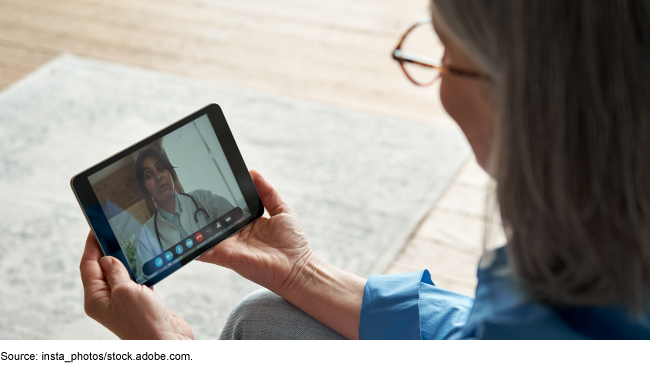Medicare Telehealth: Actions Needed to Strengthen Oversight and Help Providers Educate Patients on Privacy and Security Risks

U.S. Government Accountability Office (GAO)
September 26, 2022
To help patients access care during the pandemic, Medicare temporarily waived restrictions on telehealth—health care services delivered via phone or video. The use of telehealth services rose tenfold: 53 million telehealth visits in Apr.-Dec. 2020 vs. 5 million during the same period in 2019.
But Medicare hasn't comprehensively assessed the quality of care patients received, and lacks data on telehealth services delivered in patients' homes or via phone. Patients may also be unaware that their private health information could be overheard or inappropriately disclosed during their video appointment.
Our recommendations address these issues.
Highlights
What GAO Found
In response to the COVID-19 pandemic, the Department of Health and Human Services (HHS) temporarily waived certain Medicare restrictions on telehealth—the delivery of some services via audio-only or video technology. Use of telehealth services increased from about 5 million services pre-waiver (April to December 2019) to more than 53 million services post-waiver (April to December 2020). Total utilization of all Medicare services declined by about 14 percent post-waiver due to a 25 percent drop in in-person service use. GAO also found that, post-waiver, telehealth services increased across all provider specialties, and 5 percent of providers delivered over 40 percent of services. Urban providers delivered a greater percentage of their services via telehealth compared to rural providers; office visits and psychotherapy were the most common services.
See full article: https://www.gao.gov/products/gao-22-104454